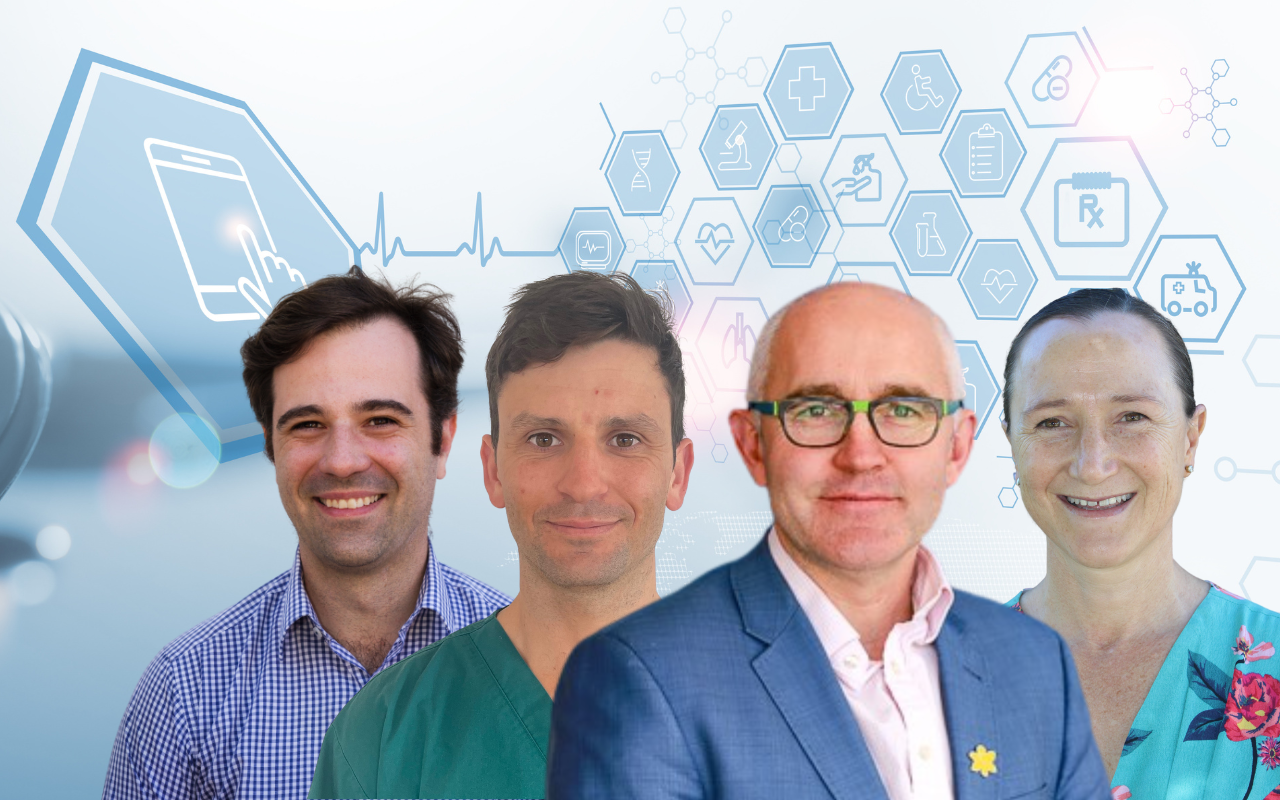Research shows patients in regional NSW had positive experiences of virtual health care, adding nuanced understanding to help improve telehealth models of care, write Dr Emma Webster, Dr Florian Honeyball, Dr Sidney Pye, and Associate Professor Rob Zielinski.
As health care workers, we seem to have either a “good” or “bad” view of virtual health care.
Like most things, the reality is far more nuanced.
We acknowledge that there is concern that telehealth may be second-best: depersonalised, transactional, superficial, and minimal.
However, virtual health care made many medical appointments possible, at a time when many Australians were locked down.
A recent critique of the uptake of virtual health care driven by the COVID-19 pandemic warns against virtual models of care being adopted as the new standard of care without proper research on effectiveness including on depersonalisation of health care.
Writing in the Journal of Bioethical Enquiry, Arnold and Kerridge argue that the pandemic led to the increasing utilisation of electronic medical records, doctors foregoing physical examination, and the use of computers-on-wheels during ward rounds.
Perhaps this explains the response of surprise from the health care community to our study (undertaken pre-pandemic) that rural cancer patients viewed teleoncology as “The best thing since sliced bread”.
In this article, we considered what might be required to find the virtual health care “sweet spot” or success factors that make telehealth acceptable to all involved.

The virtual “sweet spot”
Our qualitative study explored the experiences of seven cancer patients in Coonabarabran or Dubbo in western New South Wales who were receiving treatments by remote video-assisted chemotherapy or participating in clinical trials remotely.
It demonstrated to us how important it was for rural patients to receive oncology treatments in their hometown where they had strong social networks and enduring connections with local health providers.
These were the social and professional networks which had supported people through the health challenges life had thrown their way and would continue to support them no matter how successful their cancer journey was to be.
For these patients, teleoncology brought expert advice and treatment to them at their local hospital, strengthening their local health care team rather than uprooting their whole existence to receive treatments far from home in a cancer centre.
Patient experiences of teleoncology were enhanced when care was provided in a hybrid model (combining both in-person and telemedicine consultations) to foster the therapeutic relationship between oncologist and patient.
Medical review by the oncologist was made both in-person and virtually using remote video-assisted chemotherapy.
The medical oncologist from the nearest regional cancer centre made in-person visits to Coonabarabran approximately every six weeks.
Beyond being able to receive cancer treatments locally, patients who would otherwise have travelled hundreds of kilometres attributed value in accessing care via a telehealth appointment, especially for routine treatment follow-ups.
Interestingly, this is not just a rural phenomenon; metropolitan-based cancer patients have also found telehealth acceptable (the study was undertaken in early stages of the COVID-19 pandemic).
These metropolitan patients indicated their desire to continue with telehealth post-pandemic, combined or alternating with in-person appointments, resonating with the experiences of the rural patients we studied who also had a desire for both in-person and telemedicine consultations.
Criticisms of virtual health care
One of the criticisms of virtual health care is that it leaves hard-to-reach groups further behind, exacerbating the health gap.
Patient characteristics, such as increasing age and lower socioeconomic status, lack of access to and familiarity with technology have been found to affect patient willingness and ability to negotiate telehealth.
We acknowledge these and other limitations on access to telehealth consultations. For example, people who cannot afford the right technology, or the cost of connectivity, or those who live in areas (rural or otherwise) without reliable internet.
For virtual health care to reach all who want to use it, services need to think innovatively about what can be done to remove structural impediments so that patients from all backgrounds and from all socioeconomic backgrounds can benefit from telehealth.
In the teleoncology model we studied, patients attended their local hospital and staff operated the technology, removing structural impediments such as lack of familiarity with devices or no internet access.
Similar approaches have been applied in other health care settings for patients with a range of health conditions, with rural nursing staff facilitating telehealth appointments for patient review using a mobile videoconferencing system.
These are models which can be extended and adapted to other conditions and settings, further enhancing access for hard-to-reach groups.
In addition, health system structural impediments take the form of bureaucratic barriers which limit patient access to telehealth services.
While clever service design can ensure successful clinical interaction between health care providers and patients, structural impediments to telehealth extend beyond devices and connectivity.
For example, our own experience shows Medicare item numbers and private health cover restrictions may exclude telehealth services (such as follow-up appointments) from being reimbursed.
Patient preference for telehealth should be an important enough factor to question the legitimacy of these barriers and to provide all Australians with options to access appropriate care by virtual means.
Telehealth is certainly not always possible, nor is it always desirable, but it can enhance rural people’s access to specialist medical care.
How telehealth could be improved
The lifting of social distancing restrictions has seen a return to in-person health care, but telehealth continues, and its benefits are yet to be maximised.
Research is needed on telehealth alone, not just during a pandemic when fear factors may have influenced experience and the systems were new.
New research which explores the structural impediments and examines the effectiveness of virtual health care will help identify when telehealth is “good” for patients.
This includes exploring which conditions (and demographics) are best and least suited to telehealth and how this knowledge can help hard-to-reach groups access high quality health care.
In addition, the federal government has a role in critiquing bureaucratic impediments when these are in opposition to patient preferences and clinical advice.
A recent example was reported in InSight+ earlier this year, with the ending of Medical Benefits Schedule support for long telephone consultations forcing patients to move to video consultations, regardless of patient ability to do so.
From our experience with teleoncology, we propose successful virtual health care has the following features: first, it contributes positively to local health care teams; second, in-person and telehealth hybrid delivery models are encouraged; third, help for patients to access technology is provided; and finally, that patient preference for in-person or virtual delivery is accommodated.
Once we have a more sophisticated understanding of virtual health care, we might be less surprised to hear of positive patient experiences of telehealth.
Dr Emma Webster is a Senior Lecturer in Rural Research at the University of Sydney School of Rural Health (Dubbo).
Dr Florian Honeyball is a medical oncologist based at the Western Cancer Centre Dubbo, Western NSW Local Health District.
Dr Sidney Pye is a Senior Resident Medical Officer at Liverpool Hospital, Western Sydney Local Health District.
A/Prof Rob Zielinski is a senior oncology physician and Director of clinical trials unit at Orange Hospital in the Western NSW Local Health District.
The statements or opinions expressed in this article reflect the views of the authors and do not necessarily represent the official policy of the AMA, the MJA or InSight+ unless so stated.
Subscribe to the free InSight+ weekly newsletter here. It is available to all readers, not just registered medical practitioners.
If you would like to submit an article for consideration, send a Word version to mjainsight-editor@ampco.com.au.

 more_vert
more_vert
COVID has given us the opportunity to test and keep new models of care that we might not previously have considered. The concept of Emergency Telemedicine has certainly flourished during this time – both via video and telephone. This can include providing back-up for oncology and palliative care patients when their usual care teams are not available. Otherwise these patients either have to wait, travel or call an ambulance for what might turn out to be an easily solved issue.
For the provider, the ability to interact with patients in their own homes is a real benefit – not only saving travel for both provider and patient but also showing the person functioning in their own familiar environment.
It is not only people in remote regions who can benefit from telemedicine services but also those with limited transport or young children living in city or regional areas.
Of course, there are times when face-to-face examination cannot be safely avoided – but those times are less common than is often assumed. Much information is gained from symptoms and conversation – cheerfulness, shortness of breath etc etc. These days it’s also easy to get home oximetry as well as BP measurement. The Telemedicine doctor can also work with an on-site nurse or paramedic to be their eyes and ears, and to direct examination where needed.
SO much time is saved via Telemedicine, stretching the provider’s efficiency and the patient’s quality of life.